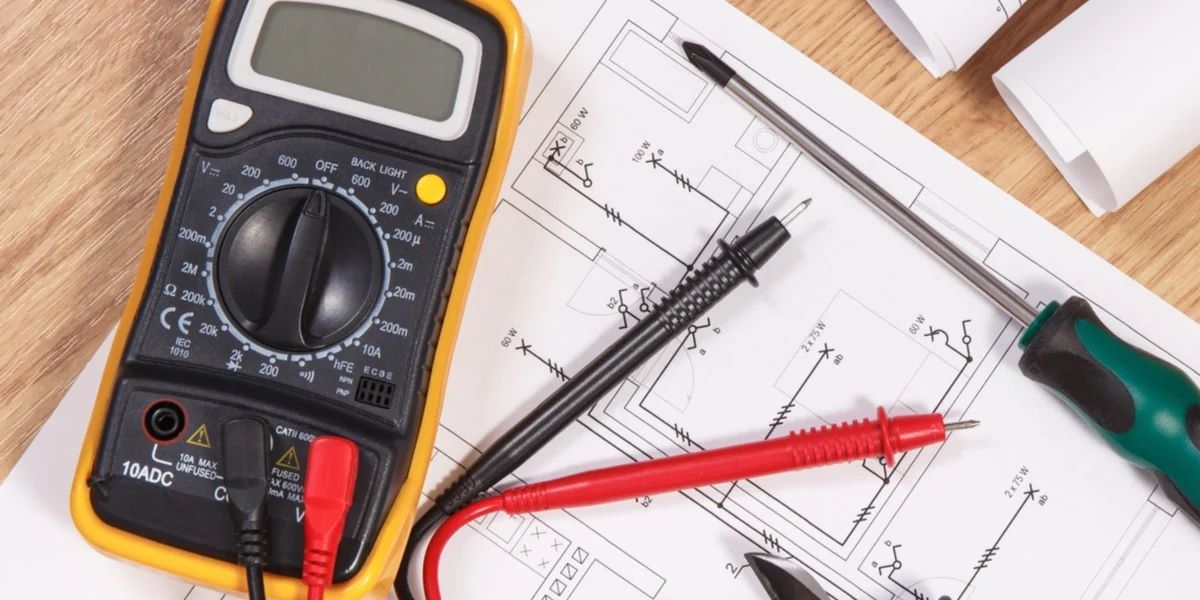Voltage Drop Calculations
5 Days- That's a Lightning Fast Turnaround Time!
1
Upload Files and Pay
Upload PDF or CAD files, and pay to start the process. An engineer is auto-assigned to your project.
2
Document Review
An engineer will review all the documents shared and connect with you if anything else is required. Initial work starts.
3
Work Starts
Actual design/ report creation work begins.
4
Quality Check
The design and report are checked by the project manager to make sure 100% quality work is delivered.
5
Delivery
The design/ report is delivered to you.
NEED HELP OR ADDITIONALINFORMATION?
C A L L U S N O W
(646) 776-4010Get Your Voltage Drop Calculations In 3 Easy Steps
0%
Protect electrical equipments from uneven voltage
100% Protection
Improve efficiency of electrical equipments
Improve Effeiciency
Get the voltage drop calculations within
5 Days
Save cost on unusual breakdown of equipments
Save Cost
$ 850
per load letter !
Documents Required
Architectural plans and elevations in CAD & PDF, along with MEP design drawings.
Delivery Time & Standards
We deliver your report (digitally) within 5 business days as per NEC standards.
What's not Covered
This service does not cover site visits, stamping, DOB/DEP filing, and more than 2 minor iterations.
Service Constraint
The service fee is limited to per building up to 6 floors.
$850*
Voltage Drop Calculations


Protect electrical equipment from uneven voltage.


Improve the efficiency of electrical equipments.


Get your voltage drop calculations at lightning speed.


Save cost on the unusual breakdown of equipment.
Voltage Drop Calculations
Hire the services of NY engineers to get accurate voltage drop calculation to deploy regulating devices and make your entire site working with high efficiency and lowered costs.
Accurate Calculations
Accuracy is our primary goal and for that our highly professional team will work with you and develop a partnership to keep the calculation highly accurate and productive.
Highly Customized Services
NY engineers can provide you with tailored services that are just right for your project. No matter what your goals or requirements are, NYE will meet and exceed them.
Reducing Energy Losses
With the years of expertise and knowledge in the field, our engineers will get the job done to provide a calculation that reduces energy losses.


Our on-demand engineering expert
Still not sure about how to proceed?
YOU CAN WRITE TO ME AT inquiry@ny-engineers.com
Resistance : The voltage drop that occurs within the circuits of direct current is resistance. The physical traits will also have a significant impact on how much energy they dissipate and consume. The resistance of a conductor or a wire will rely on its cross-sectional area, length, and material types. Temperature also contributes to this matter.
The voltage between the first resistor and the DC source will be significant. The first resistor will reduce the amount of voltage to considerable proportions. This will be the amount of energy loss caused by the resistance of the first resistor. In addition to that, some of the energy loss will also be caused by the conductor connected the first resistor with the DC source.
As the resistance increases so do the amount of energy it consumes and dissipates. Consequently, the amount of voltage drop will be high through this resistor. In the case of resistance in direct current circuit, Ohm’s Law is used for the verification of voltage drop. In this case, the total voltage will be equal to the product of current and resistance. Additionally, Kirchhoff’s law of circuit states that in a direct current circuit, the sum of all the voltage drops in all components within the circuit equals the voltage supply.
Impedance : Impedance is the amount of voltage drop within the circuits running on alternating current. In these circuits, due to the resistance opposition of the current flow occurs which is very similar to the DC circuits. But there is another type of resistance in the AC circuits as well and it is called reactance. Impedance is the sum of all the oppositions to the flow of current including reactance and resistance.
The calculation is done by taking the vector sum capacitive, inductive and electrical impedances. Impedance depends upon alternating current frequency as well as magnetic permeability of electrically isolated components and electrical conductors. These include the surrounding elements. It varies according to their spacing and size. In association with the Ohm’s Law for the DC circuits, the voltage drop equals to the product of current and impedance.
Regulatory Compliance : The Chicago Building Code and NEC (National Electrical Code) also provides with various rules and regulations associated in this regard. As per these codes, 5% is the maximum amount of voltage drop permitted. Moreover, different local and national electrical codes also set various limits for the maximum permitted amount of voltage drop within wirings for ensuring distribution efficiency as well as adequate electrical equipment operation. The max permitted to drop in voltage varies from state to state.
Improving Safety : The NEC and the Chicago Building Code both clearly define all the rules and regulations associated with voltage drops. It is because the regulatory authorities want to guarantee the safety of the site for its occupants. Both these codes also shed light on how the site owners can ensure safety and avoid various penalties.
Limiting Maintenance Costs : Curbing voltage drops not only guarantees safety and compliance but also reduces various maintenance costs. Repairs and maintenances can drive costs high and unwanted failures can further jeopardize the overall efficiency of your site. The codes also provide plenty of details associated with controlling voltage drops with various techniques involving both resistance and impedance circuits.
These voltage drops can halt the full potential of an electric circuit. The readings of the point of end users will be different from the point of source and there will be a large amount of energy lost. This energy can be put to use if calculated with accuracy and various measures are taken to lower the wastage. The voltage drop through the electrical load is directly proportional to available power that is converted within the load into a different but useful form of energy.
Controlling Unsatisfactory Outputs : You’ll find a number of wires and connectors in electrical circuits that are present in industrial, commercial or residential projects and their voltage drops can reach high proportions. These exceeding voltage drops can result in unsatisfactory performances of all the connectors, units or appliances linked within the circuit. In addition to that these drops will also lead to overheating of all the connections and wires as well.
Preventing Overheating : Overheating can cause damages to the equipment that are connected within the circuit and it can also be unsafe for the users. Furthermore, it can also lead to highly some costly repairs and maintenance processes for your equipment as well. So there are multiple issues associated with voltage drops. To mitigate the risks it is important at first hand to get the design right to control energy loss. Additionally, a highly efficient monitoring system must be in place to quickly gauge the situation before it even occurs. Such a monitoring system has to be developed in a way that it can handle different electrical networks effectively.

Installation : After coming up with the optimal design solution the next step is the installation process. It begins with the instructions provided within the design plan. The engineer must make sure that all the connectors, conductors and resistors are properly connected in the series. The wires with appropriate gauges must be used to connect different components within the series. As mentioned above, each component contributes towards impedance so the overall output must remain at an optimal level so the voltage drop can be reduced.
Repair & Maintenance : When the installation is finished it is necessary to execute any concurrent preventive repair or maintenance programs. Additionally, consistent maintenance must be carried out for ensuring excellent performance. Such maintenance programs also make sure that all repairs are carried out before there are any chances of damage occur. As per the NEC and Chicago Building Code, these repair and maintenance programs should be scheduled and carried out on an annual basis.
Another important point to consider here is that the records of all the past maintenance and repair programs should be preserved to trace any sources of the issue at hand. Any troubleshooting guides must be immediately referred to if there is any issue identified. Once all the repair and maintenance programs are completed, run the verification process again to check for any prevailing issues. The electrical engineer must make sure to record all the readings and compare them with the set benchmarks on a frequent basis.
Damage control : Damage control is critical in almost all stages for the purpose of ensuring the integrity of all the electrical circuits and systems. Conducting tests at various stages ensures that everything is working according to the plan. Most of the issues associated with voltage drops have two causes: either the components are not connected adequately or the components don’t meet the required specifications for a particular electrical network. There might be a case of any physical damage that has occurred due to the wearing or recent repairs. Wetness and moisture can also physically wear the components or conductors over time.
There are two different approaches to this perspective. If the inspection is needed to be done on an existing electrical network then voltage drops are assessed and evaluated within the network. On the other hand, if a new electrical network is required then design services are needed and for this, all objectives and goals are set before working with the system design initiates. It is important that all the requirements are noted down and understood. Both in the case of inspection and designing, it is important that the system must comply with all the rules and regulations from the NEC and Chicago Building Code. Furthermore, during the design process, all budgetary limitations must also be kept in consideration.
Additionally, electrical engineers must also ensure that all the wiring and equipment are adequately installed. They have to make sure that place, where all the proceedings will begin should be clean and all the power sources must remain adequately energized. There shouldn’t be any moisture at all either before or during the entire process.
Designing : The next step is of designing in this voltage drop calculation process. If the electrical system has failed the requirements in the inspection, then it is necessary for the electrical engineer to redesign it, based on the new requirements. Additionally, if the entire system needs redesigning then it should be done according to the code and must also focus on the goals set by the client within the set budget. If there are a few components that need to be readjusted, the engineer should go for it to keep the project under time and budgetary constraints.
In power transmission and electronic design different methodologies are used for the purpose of compensating the voltage drop effect in the electrical networks where the voltages have to be precisely maintained. The simplest technique for reducing voltage drop is increasing the conductor’s diameter in between the load and the source.
It will reduce the overall resistance within the circuit. Within the power distribution networks and systems, the amount of power can be transferred with low voltage drop with the use of high voltage. In the case of highly sophisticated techniques, active elements are used for compensating high voltage drop.
NYE professionals realize the importance of a good quality electrical system. It will not only keep your site highly productive but will also reduce any unwanted utility costs. Our highly trained staff makes sure that the clients get their problems sorted out when it comes to voltage drop. It can adversely impact the overall productivity of your site and also creates chances of hazards.
Our electrical engineers will handle the entire project effectively from the design process to the execution stage. To add to that, they will work closely with your team through close collaboration to ensure that all the goals are attained associated with the cost and time. Furthermore, our team of technical professionals also guides you through the entire process compliance to ensure that you understand all the implications linked with the quality assurance and benchmark regulations.
NYE is your ideal choice as a single service provider for your entire voltage drop calculations and assessment project. We ensure accurate, cost-efficient and deadline focused service.
Voltage Drop Types
Resistance : The voltage drop that occurs within the circuits of direct current is resistance. The physical traits will also have a significant impact on how much energy they dissipate and consume. The resistance of a conductor or a wire will rely on its cross-sectional area, length, and material types. Temperature also contributes to this matter.
The voltage between the first resistor and the DC source will be significant. The first resistor will reduce the amount of voltage to considerable proportions. This will be the amount of energy loss caused by the resistance of the first resistor. In addition to that, some of the energy loss will also be caused by the conductor connected the first resistor with the DC source.
As the resistance increases so do the amount of energy it consumes and dissipates. Consequently, the amount of voltage drop will be high through this resistor. In the case of resistance in direct current circuit, Ohm’s Law is used for the verification of voltage drop. In this case, the total voltage will be equal to the product of current and resistance. Additionally, Kirchhoff’s law of circuit states that in a direct current circuit, the sum of all the voltage drops in all components within the circuit equals the voltage supply.
Impedance : Impedance is the amount of voltage drop within the circuits running on alternating current. In these circuits, due to the resistance opposition of the current flow occurs which is very similar to the DC circuits. But there is another type of resistance in the AC circuits as well and it is called reactance. Impedance is the sum of all the oppositions to the flow of current including reactance and resistance.
The calculation is done by taking the vector sum capacitive, inductive and electrical impedances. Impedance depends upon alternating current frequency as well as magnetic permeability of electrically isolated components and electrical conductors. These include the surrounding elements. It varies according to their spacing and size. In association with the Ohm’s Law for the DC circuits, the voltage drop equals to the product of current and impedance.
Why Do You Need Voltage Drop Calculations?
Regulatory Compliance : The Chicago Building Code and NEC (National Electrical Code) also provides with various rules and regulations associated in this regard. As per these codes, 5% is the maximum amount of voltage drop permitted. Moreover, different local and national electrical codes also set various limits for the maximum permitted amount of voltage drop within wirings for ensuring distribution efficiency as well as adequate electrical equipment operation. The max permitted to drop in voltage varies from state to state.
Improving Safety : The NEC and the Chicago Building Code both clearly define all the rules and regulations associated with voltage drops. It is because the regulatory authorities want to guarantee the safety of the site for its occupants. Both these codes also shed light on how the site owners can ensure safety and avoid various penalties.
Limiting Maintenance Costs : Curbing voltage drops not only guarantees safety and compliance but also reduces various maintenance costs. Repairs and maintenances can drive costs high and unwanted failures can further jeopardize the overall efficiency of your site. The codes also provide plenty of details associated with controlling voltage drops with various techniques involving both resistance and impedance circuits.
These voltage drops can halt the full potential of an electric circuit. The readings of the point of end users will be different from the point of source and there will be a large amount of energy lost. This energy can be put to use if calculated with accuracy and various measures are taken to lower the wastage. The voltage drop through the electrical load is directly proportional to available power that is converted within the load into a different but useful form of energy.
Controlling Unsatisfactory Outputs : You’ll find a number of wires and connectors in electrical circuits that are present in industrial, commercial or residential projects and their voltage drops can reach high proportions. These exceeding voltage drops can result in unsatisfactory performances of all the connectors, units or appliances linked within the circuit. In addition to that these drops will also lead to overheating of all the connections and wires as well.
Preventing Overheating : Overheating can cause damages to the equipment that are connected within the circuit and it can also be unsafe for the users. Furthermore, it can also lead to highly some costly repairs and maintenance processes for your equipment as well. So there are multiple issues associated with voltage drops. To mitigate the risks it is important at first hand to get the design right to control energy loss. Additionally, a highly efficient monitoring system must be in place to quickly gauge the situation before it even occurs. Such a monitoring system has to be developed in a way that it can handle different electrical networks effectively.
Voltage Drop Calculation Services

Installation : After coming up with the optimal design solution the next step is the installation process. It begins with the instructions provided within the design plan. The engineer must make sure that all the connectors, conductors and resistors are properly connected in the series. The wires with appropriate gauges must be used to connect different components within the series. As mentioned above, each component contributes towards impedance so the overall output must remain at an optimal level so the voltage drop can be reduced.
Repair & Maintenance : When the installation is finished it is necessary to execute any concurrent preventive repair or maintenance programs. Additionally, consistent maintenance must be carried out for ensuring excellent performance. Such maintenance programs also make sure that all repairs are carried out before there are any chances of damage occur. As per the NEC and Chicago Building Code, these repair and maintenance programs should be scheduled and carried out on an annual basis.
Another important point to consider here is that the records of all the past maintenance and repair programs should be preserved to trace any sources of the issue at hand. Any troubleshooting guides must be immediately referred to if there is any issue identified. Once all the repair and maintenance programs are completed, run the verification process again to check for any prevailing issues. The electrical engineer must make sure to record all the readings and compare them with the set benchmarks on a frequent basis.
Damage control : Damage control is critical in almost all stages for the purpose of ensuring the integrity of all the electrical circuits and systems. Conducting tests at various stages ensures that everything is working according to the plan. Most of the issues associated with voltage drops have two causes: either the components are not connected adequately or the components don’t meet the required specifications for a particular electrical network. There might be a case of any physical damage that has occurred due to the wearing or recent repairs. Wetness and moisture can also physically wear the components or conductors over time.
There are two different approaches to this perspective. If the inspection is needed to be done on an existing electrical network then voltage drops are assessed and evaluated within the network. On the other hand, if a new electrical network is required then design services are needed and for this, all objectives and goals are set before working with the system design initiates. It is important that all the requirements are noted down and understood. Both in the case of inspection and designing, it is important that the system must comply with all the rules and regulations from the NEC and Chicago Building Code. Furthermore, during the design process, all budgetary limitations must also be kept in consideration.
Additionally, electrical engineers must also ensure that all the wiring and equipment are adequately installed. They have to make sure that place, where all the proceedings will begin should be clean and all the power sources must remain adequately energized. There shouldn’t be any moisture at all either before or during the entire process.
Designing : The next step is of designing in this voltage drop calculation process. If the electrical system has failed the requirements in the inspection, then it is necessary for the electrical engineer to redesign it, based on the new requirements. Additionally, if the entire system needs redesigning then it should be done according to the code and must also focus on the goals set by the client within the set budget. If there are a few components that need to be readjusted, the engineer should go for it to keep the project under time and budgetary constraints.
Ways To Reduce Voltage Drops
In power transmission and electronic design different methodologies are used for the purpose of compensating the voltage drop effect in the electrical networks where the voltages have to be precisely maintained. The simplest technique for reducing voltage drop is increasing the conductor’s diameter in between the load and the source.
It will reduce the overall resistance within the circuit. Within the power distribution networks and systems, the amount of power can be transferred with low voltage drop with the use of high voltage. In the case of highly sophisticated techniques, active elements are used for compensating high voltage drop.
Why You Should Hire New York Engineers?
NYE professionals realize the importance of a good quality electrical system. It will not only keep your site highly productive but will also reduce any unwanted utility costs. Our highly trained staff makes sure that the clients get their problems sorted out when it comes to voltage drop. It can adversely impact the overall productivity of your site and also creates chances of hazards.
Our electrical engineers will handle the entire project effectively from the design process to the execution stage. To add to that, they will work closely with your team through close collaboration to ensure that all the goals are attained associated with the cost and time. Furthermore, our team of technical professionals also guides you through the entire process compliance to ensure that you understand all the implications linked with the quality assurance and benchmark regulations.
NYE is your ideal choice as a single service provider for your entire voltage drop calculations and assessment project. We ensure accurate, cost-efficient and deadline focused service.


